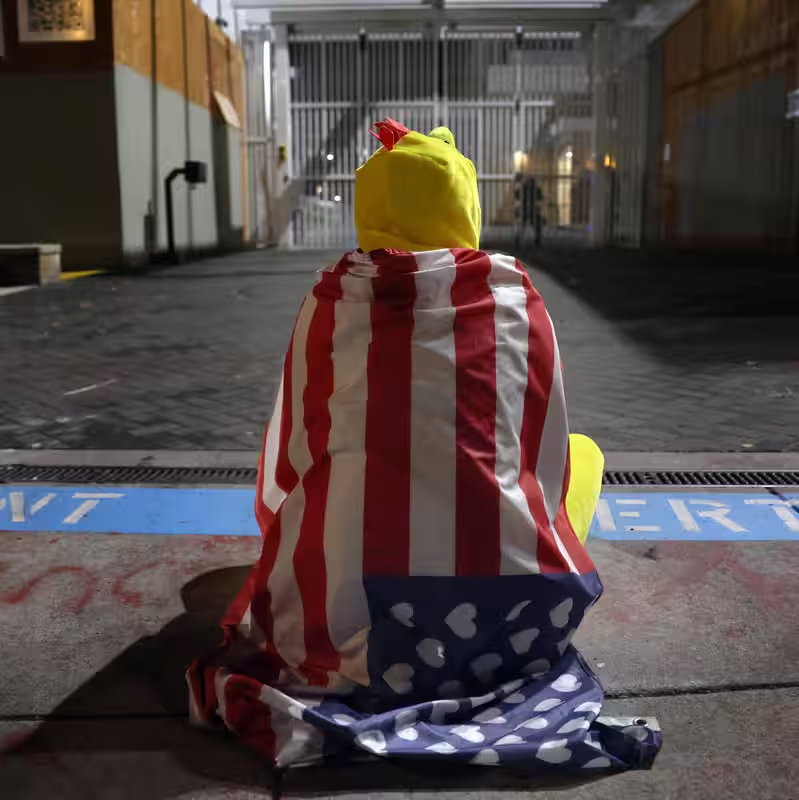President Donald Trump has repeatedly described Portland, Oregon, as a city “on fire” and “burning to the ground,” using dramatic language to justify his push to deploy National Guard troops and federal agents into the city. But a closer look at crime statistics, protest activity, and on-the-ground reporting reveals a far more nuanced—and calmer—reality.
Table of Contents
- Trump’s Rhetoric vs. Reality
- What Portland’s Crime Data Really Shows
- Protests: Small, Peaceful, and Localized
- Legal Pushback Against Federal Deployment
- Why the Disconnect Between Rhetoric and Reality?
- Sources
Trump’s Rhetoric vs. Reality
“Portland is burning to the ground,” Trump declared on October 6, 2025. “Insurrectionists are all over the place.” He has used similar apocalyptic language since early 2025 to frame the city as a lawless war zone—part of a broader narrative justifying federal intervention in Democratic-led cities like Chicago and Los Angeles.
Yet residents, local officials, and independent data tell a different story. While Portland faces real challenges—homelessness, housing shortages, and occasional property crime—it is not experiencing the widespread violence or civil collapse the president describes.
What Portland’s Crime Data Really Shows
According to publicly available data from the Portland Police Bureau and the FBI’s Uniform Crime Reporting program:
- Homicides in Portland through September 2025: 42
- That’s down from 77 in all of 2023 and 81 in 2022.
- Aggravated assaults are also trending downward compared to pandemic-era peaks.
For context, Chicago recorded 319 homicides in the same period—yet Trump has called Portland “worse than Afghanistan.”
| City | Homicides (Jan–Sept 2025) | Trend vs. 2023 |
|---|---|---|
| Portland, OR | 42 | ↓ 45% |
| Chicago, IL | 319 | ↓ 48% |
| Los Angeles, CA | 189 | ↓ 32% |
“The data simply doesn’t support the ‘burning city’ narrative,” said Dr. Maya Lin, a criminologist at Portland State University. “Portland has serious issues, but it’s not in chaos.”
Protests: Small, Peaceful, and Localized
The protests Trump cites as evidence of “insurrection” have been centered almost exclusively around a single federal immigration facility in Southwest Portland. Most gatherings involve fewer than 30 people.
On-the-ground reporting from The New York Times describes demonstrators holding signs, chanting, and occasionally facing off with counterprotesters—but without widespread violence. Some participants even showed up in costumes (a chicken, a frog), reflecting Portland’s quirky protest culture.
Federal agents have responded with tear gas and pepper balls, escalating minor standoffs. But local police say the protests have not significantly disrupted city life or posed a public safety threat beyond the immediate block.
Legal Pushback Against Federal Deployment
Federal Judge Karin Immergut—a Trump appointee—blocked the administration’s attempt to send National Guard troops from Texas and California into Portland. In her ruling, she wrote that the protests “were not significantly violent or disruptive” and warned that the White House’s actions “risk blurring the line between civil and military federal power.”
Despite this, Trump and senior aide Stephen Miller continue to label the situation an “insurrection,” raising the possibility of invoking the Insurrection Act of 1807—a rarely used law that would allow military deployment without state consent.
Why the Disconnect Between Rhetoric and Reality?
Experts suggest the exaggerated claims serve a political purpose: rallying Trump’s base, justifying aggressive immigration enforcement, and creating a narrative of urban decay under Democratic leadership.
“This isn’t about public safety—it’s about symbolism,” said political analyst Elena Torres. “Portland has become a stand-in for everything the administration opposes: progressive policies, sanctuary city status, and resistance to federal overreach.”
Meanwhile, Portland residents say the real impact is fear and confusion. “We’re not burning,” said local activist Justin Allen. “We’re just trying to protect our neighbors from being deported.”




